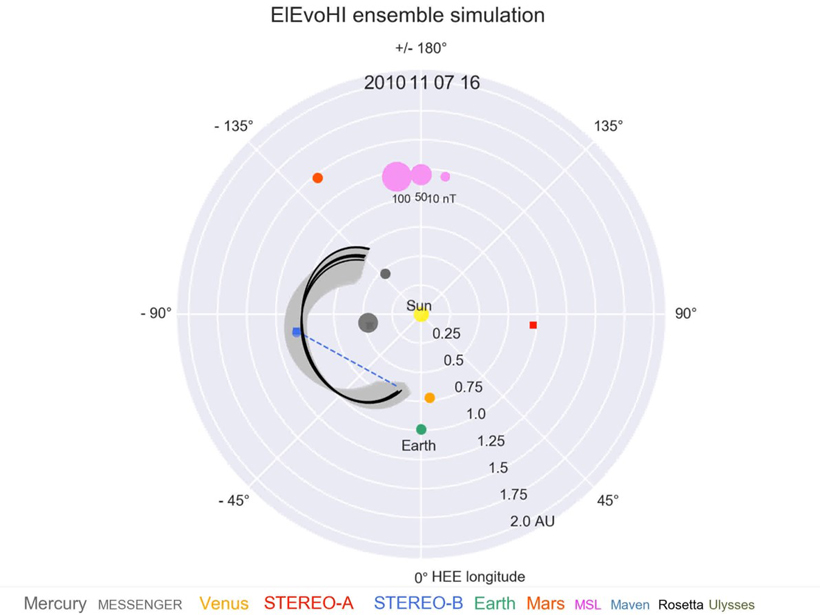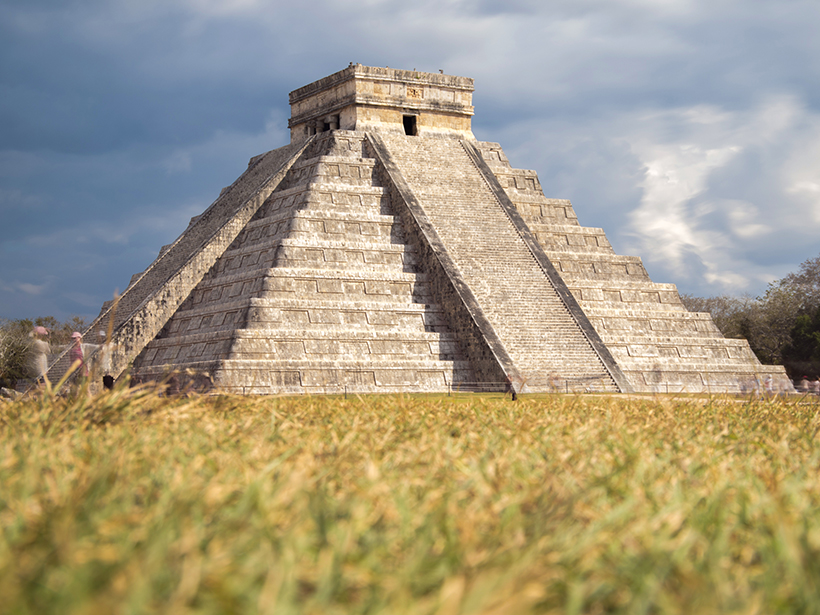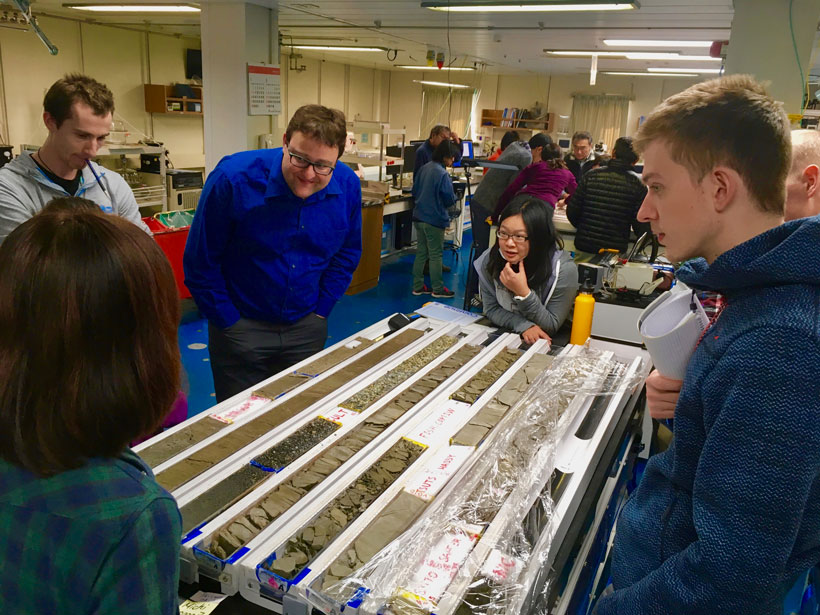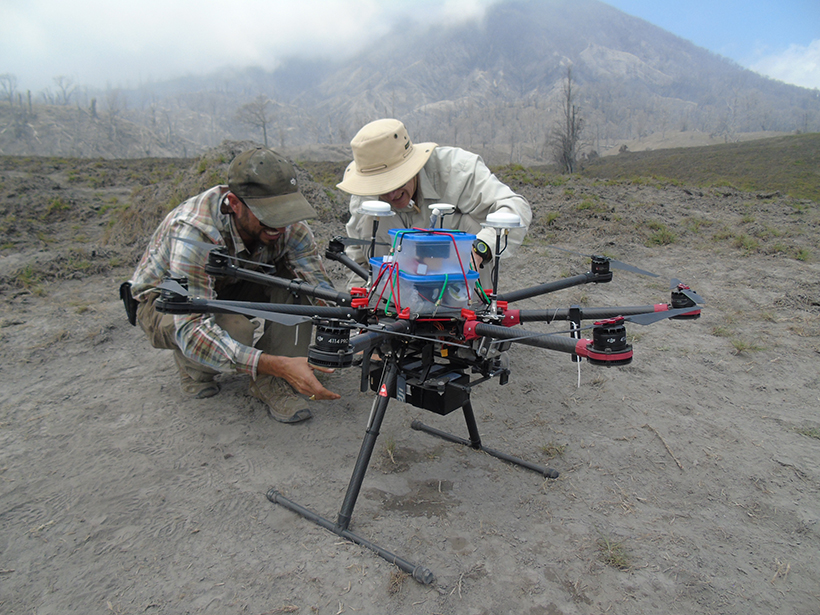Ensemble techniques are opening a path toward space weather forecasts that give deeper understanding of the risk posed by each solar storm that approaches our planet.
Hazards & Disasters
Seismic Sensors Record a Hurricane’s Roar
Newly installed infrasound sensors at a Global Seismographic Network station on Puerto Rico recorded the sounds of Hurricane Maria passing overhead.
Severe Drought May Have Helped Hasten Ancient Maya’s Collapse
Chemical signatures from sediments in lake cores reveal that the centuries-long drought during the fall of Classic Maya civilization was worse than researchers had imagined.
Two Active Volcanoes in Japan May Share a Magma Source
Evidence collected following the 2011 eruption of Japan’s Shinmoedake volcano suggests that the powerful event affected the behavior of an active caldera nearby.
At-Sea Workshop Advances Subduction Zone Research
International Ocean Discovery Program Core-Log-Seismic integration at Sea (CLSI@Sea) workshop; Nankai Trough, Philippine Sea, off the coast of southwest Japan, January–February 2018
Four Ways Kīlauea Is Redrawing the Map
From burying communities to building new land, this historic eruption is changing the landscape of Hawai‘i Island.
Drones Swoop in to Measure Gas Belched from Volcanoes
A team of volcanologists, chemists, physicists, and engineers from around the world test novel techniques at Central America’s two largest degassing volcanoes.
Are We Prepared for an Asteroid Headed Straight to Earth?
A century after an asteroid crashed into Tunguska, Siberia, experts discuss the current lineup of missions to study asteroids and mitigate future disasters should another object from space hit Earth.
Upper Estuaries Found to Be Significant Blue Carbon Sink
Inland from the seagrass and salt marsh ecosystems that border the ocean, upper estuaries store more carbon than previously realized and could play an important role in mitigating climate change.
When Environmental Forces Collide
Multiple factors often interact to amplify the effects of severe storms, droughts, and other extreme water-related events.










